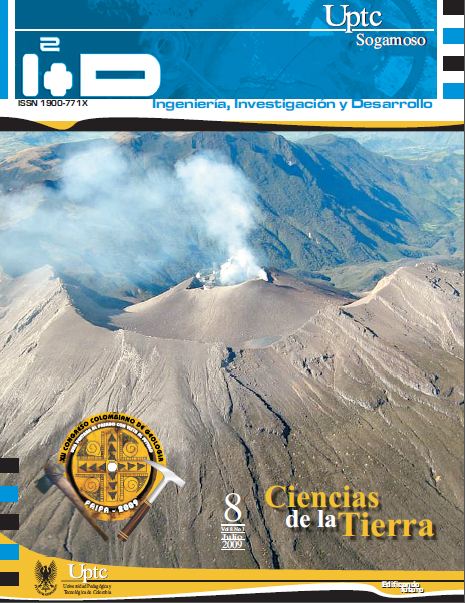Provenance determination of archaeological marbles as an example for the use of geoscientific methods

Abstract
The geoscientific analysis with the purpose of provenance determination of marbles used in the greek and roman antiquity helps to resolve archaeological questions. Here we show methods used for the characterization of marble findings from Asia minor, which are now exposed in the Pergamon Museum in Berlin. 232 samples of 39 ancient objects and 362 samples of 20 marble deposits gave a broad database. The frequent superposition of characteristics of the deposits requires a multivariate approach. In spite of all modern analytical techniques, the petrographic characteristics continue being indispensable. Dolomites measured by means of XRD showed a good correlation with Mg. Mg, Fe, Sr and Mn were determined by means of ICP-OES, and the REE, by means of ICP-MS. Stable isotopes (äCPDB and äOPDB) gave important indications. The multivariate statistic (factorial, to cluster, discriminatory analysis) confirmed the geologic relevance and the utility of the used characteristics. The gas chromatography of volatile phases, the cathodoluminiscence and EPR yielded additional results. Here we use the marbles of the Pergamon Altar, which were proved to come from Marmara Island and not from the local deposit of Akkaya, to show how all the ancient objects could be assigned to marble quarries.
Keywords
marble, pergamon altar, provenance determination, stable isotopes, geochemistry, cathodoluminescence
References
- Bau, M., Dulski, P. y Möller, P., 1995: Yttrium and holmium in South Pacific seawater, Vertical distribution and possible fractionation mechanisms. - Chemie der Erde 55, pp. 1-15.
- Yttrium and lanthanides in eastern Mediterranean seawater and their fractionation during redox-cycling. - Marine Chemistry 56, pp. 123-131.
- Craig, H. y Craig, V., 1972: Greek marbles: determination of provenance by isotopic analysis. - Science 176, pp. 401-403.
- Cramer, T., 2004: Multivariate herkunftsanalyse von marmor auf petrographischer und geochemischer basis - das beispiel kleinasiatischer archaischer, hellenistischer und römischer marmorobjekte der berliner antiken-sammlung und ihre zuordnung zu mediterranen und anatolischen marmorlagerstätten. - dissertation fg lagerstättenforschung. Bau, M., Möller, P. y Dulski, P., 1996.
- Cramer, T., 2005: Procedencia de mármoles usados en la antigüedad griega, En Memorias X Congreso Colombiano de Geología, 26-29 julio 2005, CD-ROM.
- De Baar, H. J. W., Schijf, J. y Byrne, R. H., 1991: Solution chemistry of the rare earth elements in seawater. - Eur. J. Solid State Inorg. Chem, 28, pp. 357-373.
- Germann, K. y Cramer, T., 2005: Methoden der herkunftsbestimmung für naturwerksteine - das beispiel des marmors. - Zeitschrift der Deutschen Gesellschaft für Geowissenschaften - ZDGG 156, pp. 25-31.
- Germann, K., Gruben, G., Knoll, H., Valis, V. y Winkler, F. J., 1988: Provenance characteristics of Cycladic (Paros and Naxos) marbles - a multivariate geological approach. - In: Herz, N. y Waelkens, M. (eds.), Classical marble: geochemistry, technology, trade. Kluwer Academic Publishers, pp. 251-262.
- Heilmeyer, W.-D., 2008: Berliner Marmore aus Kleinasien - Bericht über ein geologisch-archäologisches Projekt 1994-2004. - In Deutsches Archäologisches Institut (ed.) Jahrbuch des Deutschen Archäologischen Instituts. Walter de Gruyter, pp. 127-161.
- Herz, N., 1987: Carbon and oxygen isotopic ratios: a data base for classical Greek and Roman Marble. - Archaeometry 29, pp. 35-43.
- Jones, A. P., Wall, F. y Williams, C. T. (eds.). 1996: Rare Earth Elements - Chemistry, origin and ore deposits, Chapman & Hall.
- Lepsius, R., 1891: Griechische Marmorstudien. - AbhandlungenKönig l . Akademieder Wissenschaften, Phil.-Hist. Kl. 1890.
- Lipin, B. R. y McKay, G. A. (eds.), (1989): Geochemistry and mineralogy of rare earth elements, Mineralogical Society of America.
- McLennan, S. M., 1989: Rare earth elements in sedimentary rocks: Influence of provenance and sedimentary processes, In Lipin, B. R. y McKay, G. A. (eds.), Geochemistry and mineralogy of rare earth elements, Reviews in Mineralogy, pp. 169-200.
- Moens, L., Roos, P., de Paepe, P. y Lunsingh Scheurleer, R., 1992: Provenance determination of white marble sculptures from the Allard Pierson Museum in Amsterdam, based on chemical, microscopic and isotopic criterias, In Waelkens, M., Herz, N. y Moens, L. (eds.), Ancient stones : quarrying, trade and provenance : interdisciplinary studies on stones and stone technology in Europe and Near East from the prehistoric to the early Christian period. Leuven University Press, pp. 269-276.
- Ramseyer, K., Decrouez, D., Barbin, V., Burns, S. J., Moens, L., de Paepe, P., Roos, P., Chamay, J. y Maier, J. L., 1992: Provenance Investigation of marble artifacts now in the collection of the Museum of Art and History in Geneva. - In Waelkens, M., Herz, N. y Moens, L. (eds.), Ancient stones: quarrying, trade and provenance : interdisciplinary studies on stones and stone technology in Europe and Near East from the prehistoric to the early Christian period. Leuven University Press, pp. 287-292.
- Rybach, L. y Nissen, H. U., 1965: Neutron activation of Mn and Na traces in marbles worked by the ancient Greeks, Proc. Radiochemical Methods of Analysis 1, pp. 105-107.
- Schuchhardt, C., 1912: Stadt und Land, In Conze, A. (ed.) Altertümer von Pergamon, p. 71.